- Tips for Preventing Blackleg: What to Do when the First Sprouts Appear
- Understanding Blackleg: A Common Disease in Plants
- Symptoms of Blackleg
- Factors Contributing to Blackleg
- Preventing Blackleg
- Start with Healthy Seedlings
- Practice Crop Rotation
- Maintain Proper Plant Spacing
- Why is plant spacing important?
- How to maintain proper plant spacing?
- The benefits of proper plant spacing
- Ensure Adequate Drainage
- Implement Fungicide Sprays
- Monitor and Control Weeds
- 1. Regularly inspect the field
- 2. Use preventative measures
- 3. Use cultural weed control methods
- 4. Manual weed control
- 5. Use herbicides judiciously
- 6. Regularly monitor weed control efficacy
- 7. Practice good sanitation
- Promote Good Air Circulation
- Here are some tips to promote good air circulation:
- Remove and Destroy Infected Plants
- Steps to remove and destroy infected plants:
- Questions and Answers:
- What is blackleg and how does it affect plants?
- What are the first signs of blackleg in plants?
- How can I prevent blackleg in my plants?
- Is there any way to treat plants already affected by blackleg?
- Can blackleg affect plants in all stages of growth?
- Videos: Planting Out and Protecting Cabbage, Kale and Brussel Sprouts – Essential Tips for SUCCESS #78
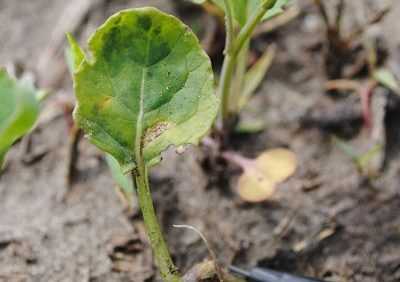
Blackleg is a common fungal disease that affects sprouting potatoes, causing significant damage to crops and reducing yields. It is essential for farmers to take preventative measures as soon as the first sprouts appear to minimize the risk of blackleg spreading and causing extensive damage.
1. Practice Crop Rotation: Rotate your potato crops with other non-host plants, such as corn or beans, to disrupt the blackleg fungus’s life cycle. By planting potatoes in different areas of your farm each year, you can reduce the buildup of disease-causing pathogens in the soil.
2. Plant Disease-Free Seed Potatoes: Using certified disease-free seed potatoes is crucial for preventing blackleg. Inspect the seed potatoes carefully, looking for any signs of infection, such as dark lesions or discoloration. Discard any infected potatoes and only plant healthy ones to minimize the risk of introducing blackleg to your field.
3. Apply Fungicides: Consider applying fungicides to your potato crop, especially during the early stages of growth. Fungicides can help prevent the spread of blackleg and protect the emerging sprouts from infection. Consult with agricultural experts to determine the most effective fungicides for your specific situation.
4. Monitor Field Conditions: Regularly inspect your potato field for signs of blackleg infection, such as wilting or yellowing plants. Take immediate action if you notice any symptoms, as early detection and intervention can help prevent the disease from spreading to healthy plants.
“Prevention is key when it comes to managing blackleg in potato crops. By implementing these proactive measures as soon as the first sprouts appear, farmers can significantly reduce the risk of blackleg affecting their yield and profitability.”
By following these tips and adopting good agricultural practices, farmers can protect their potato crop from blackleg and ensure a successful harvest. Remember to stay vigilant and consult with experts for further guidance on managing this persistent and damaging disease.
Tips for Preventing Blackleg: What to Do when the First Sprouts Appear
Blackleg is a common disease affecting many crops, including potatoes. It is caused by the bacteria Phoma foveata and can cause significant yield loss if left unchecked. Taking preventive measures is crucial to control the spread of blackleg and protect your crop. Here are some useful tips to follow when the first sprouts appear:
- Proper Field Preparation: Start by choosing a well-drained field for planting potatoes. Avoid wet or low-lying areas where the risk of blackleg development is higher. Ensure the field is free from any rotten plant debris or infected tubers.
- Use Certified Seed: Always use certified disease-free seed potatoes from reliable sources. Certified seed potatoes have been inspected and tested to ensure they are free from blackleg and other diseases. Planting infected seed can introduce the bacteria into your crop.
- Rotate Crops: Practice crop rotation to prevent the buildup of blackleg bacteria in the soil. Avoid planting potatoes in the same field or any other susceptible crops for at least three years.
- Proper Sanitation: Maintain proper sanitation practices to minimize the spread of blackleg bacteria. Clean and disinfect all equipment, tools, and machinery before and after use. Remove and destroy any infected plant debris found in the field.
- Monitor for Symptoms: Regularly inspect your potato plants for any signs of blackleg. Look for dark cankers or lesions on the stem and tubers. If you notice any infected plants, remove them immediately to prevent further spread.
- Monitor Environmental Conditions: Blackleg thrives in humid and wet conditions. Avoid over-irrigation and ensure proper drainage in the field. Monitor the weather forecast and adjust watering accordingly to prevent excess moisture in the soil.
- Consider Fungicide Applications: In severe cases or if previous blackleg infections have occurred, applying fungicides can help control the disease. Consult with a local agricultural expert or extension office for recommended fungicides and application guidelines.
By following these preventive measures, you can greatly reduce the risk of blackleg in your potato crop. Early detection and prompt action are key to minimizing the potential damage caused by this disease.
Understanding Blackleg: A Common Disease in Plants
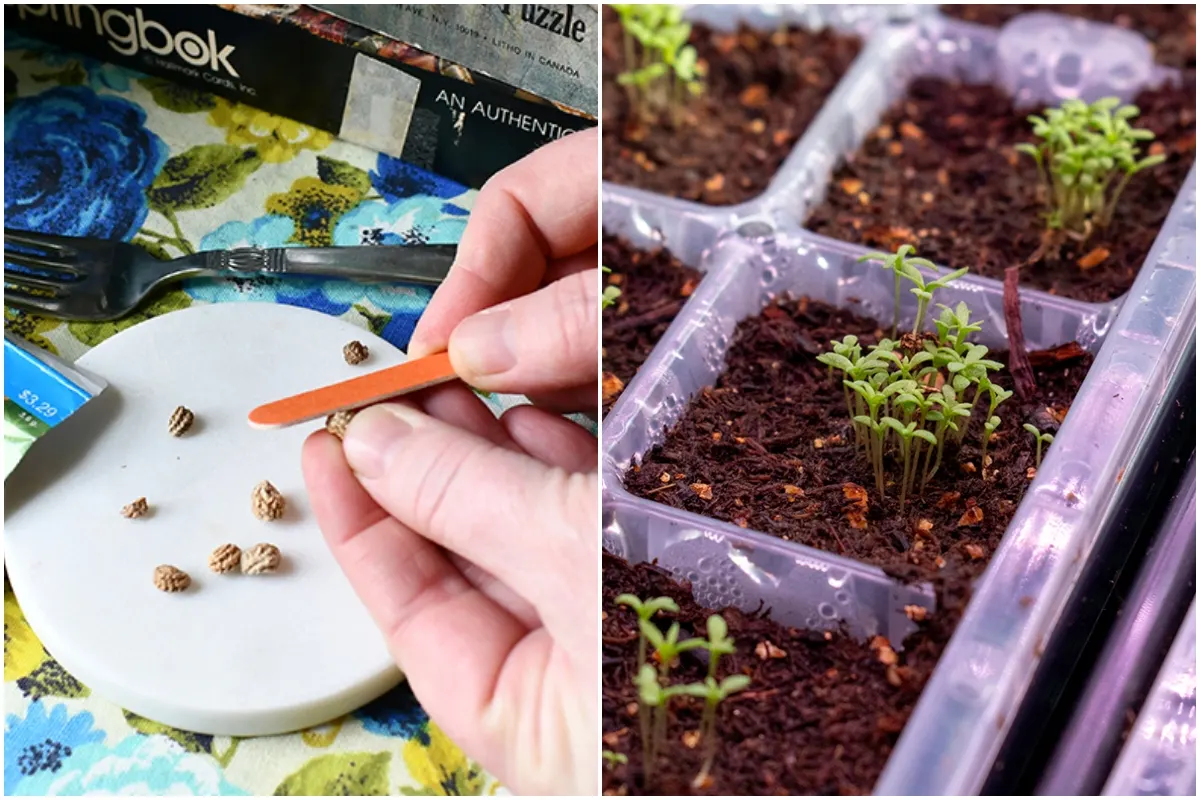

Blackleg is a widespread disease that affects a variety of plants, including potatoes, cabbage, and canola. It is caused by the bacterium Leptosphaeria maculans and is characterized by dark, necrotic lesions on the plants’ stems and leaves. Blackleg can have a significant impact on crop yield and quality, making it essential for farmers and gardeners to understand and take steps to prevent this disease.
Symptoms of Blackleg


One of the first signs of blackleg is wilting or yellowing of the leaves, which may eventually die. As the disease progresses, dark lesions appear on the lower stems and leaves, giving the disease its name. These lesions may expand and become sunken, often emitting a foul odor. In severe cases, the entire plant can wilt and die.
Factors Contributing to Blackleg
Several factors can contribute to the development and spread of blackleg, including:
- Infected Seed: Planting infected seed can introduce the blackleg bacterium into the soil, leading to disease development.
- Crop Residue: Leaving infected plant debris in the field can provide a suitable environment for the blackleg bacterium to survive and spread.
- Moisture: Wet conditions favor the growth and spread of blackleg, as the bacteria thrives in moist environments.
Preventing Blackleg
Preventing blackleg starts with using disease-free seed and avoiding planting in fields with a history of blackleg. Crop rotation can also help reduce the risk of blackleg, as it breaks the disease cycle and starves the bacteria of host plants. It is crucial to clean and sterilize equipment, as contaminated tools and machinery can spread the disease.
Another important preventive measure is practicing good field hygiene. This includes removing and destroying infected crop residues and maintaining clean irrigation systems. Proper watering practices, such as avoiding overwatering, can also help prevent blackleg.
| Tip | Description |
|---|---|
| Use certified disease-free seed | Planting disease-free seed can significantly reduce the risk of blackleg. |
| Practice crop rotation | Rotating crops can break the disease cycle and reduce the population of blackleg-causing bacteria. |
| Remove infected crop residues | Destroying infected plant debris helps eliminate potential sources of infection. |
| Clean and sterilize equipment | Regularly clean and sterilize tools and machinery to prevent the spread of bacteria. |
| Maintain proper irrigation | Avoid overwatering and ensure irrigation systems are clean to prevent the spread of bacteria. |
By understanding the symptoms and risk factors associated with blackleg, as well as implementing preventative measures, farmers and gardeners can effectively manage and mitigate the impact of this common plant disease.
Start with Healthy Seedlings
One of the most important steps in preventing blackleg is starting with healthy seedlings. Here are some tips to ensure you have healthy seedlings:
- Choose certified disease-free seedlings: When purchasing seedlings, look for ones that are certified disease-free. This will help ensure that you are starting with clean and healthy plants.
- Inspect the seedlings: Before planting, inspect the seedlings for any signs of disease or damage. Look for any wilting, discoloration, or lesions on the leaves and stems.
- Handle seedlings with care: Be gentle when handling the seedlings to avoid any damage to the roots or stems. Rough handling can weaken the plants and make them more susceptible to diseases like blackleg.
- Use clean planting materials: Make sure to use clean planting materials, such as pots, trays, and soil. Avoid reusing materials from previous plantings, as they may harbor disease-causing pathogens.
- Provide proper nutrition: Ensure that the seedlings have access to the necessary nutrients for healthy growth. Use a balanced fertilizer to provide the essential elements needed for strong and vigorous plants.
By starting with healthy seedlings, you can give your plants the best chance of avoiding blackleg and other diseases. Taking these steps will help set a strong foundation for a successful and productive crop.
Practice Crop Rotation
One effective way to prevent blackleg disease is to practice crop rotation. Crop rotation involves growing different crops in different areas of your garden each year. This helps to break the disease cycle by preventing the buildup of pathogens in the soil.
When planning your crop rotation, it is important to avoid planting members of the brassica family, such as cabbage, broccoli, and cauliflower, in the same area for at least three years. This prevents the disease from spreading and infecting new plants.
In addition to avoiding planting brassicas in the same area, it is also beneficial to include crops that are not susceptible to blackleg in your rotation. By including crops such as corn, beans, or potatoes, you can help reduce the risk of disease.
It is important to keep a record of where you plant each crop in order to effectively rotate your crops. This can be done by creating a simple map of your garden and indicating which area each crop was planted in each year. This will help you to keep track of when it is safe to plant brassicas in a particular area again.
By practicing crop rotation, you can significantly reduce the risk of blackleg disease in your garden. This simple and effective technique can help to keep your plants healthy and productive.
Maintain Proper Plant Spacing
Proper plant spacing is an important aspect of preventing blackleg in your crops. By maintaining the right distance between plants, you can reduce the chances of the disease spreading and minimize its impact on your crop yield.
Why is plant spacing important?
Plant spacing plays a crucial role in preventing the spread of blackleg. When plants are too close together, it creates a favorable environment for the disease to thrive. Close proximity allows for easy transfer of the pathogen from infected plants to healthy ones. Additionally, crowded plants have limited air circulation and light penetration, which further promotes the growth and spread of blackleg.
How to maintain proper plant spacing?
Here are some tips to ensure you maintain proper plant spacing:
- Read the seed packet or consult with your local agricultural extension office to determine the recommended spacing for the particular crop you are growing.
- Measure the distance between plants accurately and mark the spacing using stakes or other markers.
- Follow the recommended spacing guidelines when transplanting or sowing seeds.
- Regularly thin out crowded plants to maintain the desired spacing.
- Avoid overcrowding by planting only the number of plants recommended for the available space.
The benefits of proper plant spacing
Maintaining proper plant spacing has several benefits:
- Improved air circulation: Adequate spacing allows for better air movement among plants, reducing the chances of moisture buildup and creating an unfavorable environment for the blackleg pathogen.
- Enhanced light penetration: Spacing plants correctly ensures that they receive sufficient sunlight, which is crucial for their growth and vitality. Sunlight helps to inhibit the growth of blackleg.
- Easier disease management: With proper plant spacing, it becomes easier to identify and treat infected plants, preventing the disease from spreading to healthy plants.
- Higher crop yields: By preventing blackleg from spreading, proper plant spacing can help maximize your crop yields and improve overall productivity.
Remember, maintaining proper plant spacing is essential in preventing the spread of blackleg. Follow the recommended guidelines for your specific crop to ensure healthy and thriving plants.
Ensure Adequate Drainage
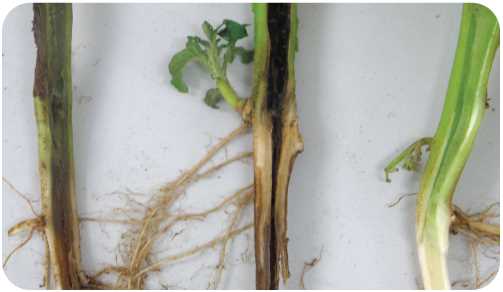

Poor drainage can contribute to the development and spread of blackleg disease. Excess moisture in the soil creates favorable conditions for the growth of the bacteria that cause blackleg. To ensure adequate drainage, follow these steps:
- Choose well-draining soil: Use soil that is loose and well-draining to prevent water from accumulating around the roots of your plants.
- Amend the soil: If your soil has poor drainage, you can improve it by adding organic matter such as compost or aged manure. These amendments will help to break up compacted soil and improve its ability to drain.
- Install drainage systems: In areas where drainage is a persistent problem, consider installing drainage systems such as French drains or underground pipes to channel excess water away from your plants.
By ensuring adequate drainage, you can help prevent the conditions that favor the development of blackleg disease. This will not only protect your current crop, but also help to minimize the risk of blackleg in future plantings.
Implement Fungicide Sprays
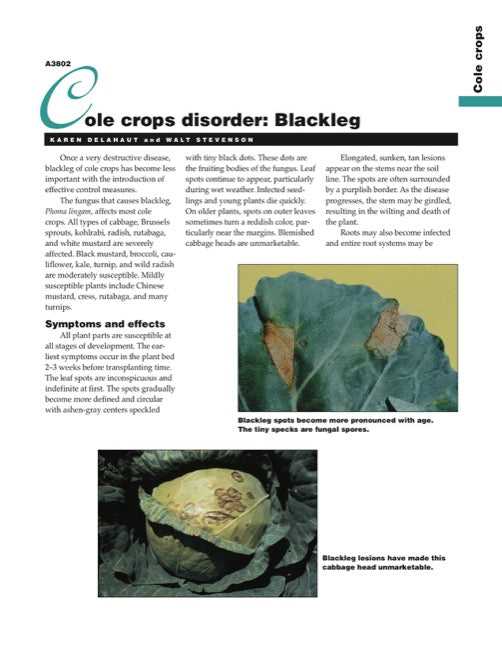

One effective way to prevent blackleg disease in your crops is to implement fungicide sprays. Fungicides are chemical substances that help control and inhibit the growth of fungal pathogens, including the one responsible for blackleg.
When the first sprouts appear, it is important to start applying fungicide sprays to protect your crops. Here are some tips to effectively implement fungicide sprays:
- Select the right fungicide: Choose a fungicide that specifically targets the fungus causing blackleg. Consult with a local agricultural extension office or an expert to determine the most suitable fungicide for your region and type of crop.
- Follow the label instructions: Read and follow the instructions provided on the fungicide label. Pay attention to the recommended dosage, timing, and application method.
- Apply at the right time: The timing of fungicide application is crucial for its effectiveness. Apply the fungicide when the first symptoms of blackleg appear or as a preventive measure if the disease is known to be prevalent in your area.
- Apply in appropriate weather conditions: Fungicides work best when applied in favorable weather conditions. Avoid applying fungicides during heavy rain, wind, or extreme temperatures. Optimal conditions include mild temperatures and calm weather.
- Use proper equipment: Use proper spray equipment, such as backpack sprayers or tractor-mounted sprayers, to ensure complete coverage of the crop. Adjust the nozzle settings for optimal spray pattern and coverage.
Remember to always follow safety precautions when handling fungicides and use personal protective equipment, such as gloves and goggles. Regularly monitor your crops for any signs of blackleg and continue applying fungicide sprays as recommended throughout the growing season for maximum protection.
Monitor and Control Weeds
Weeds can compete with potato plants for nutrients, water, and sunlight, reducing the overall yield of the crop. It is essential to monitor and control weeds to ensure a healthy and productive potato field. Here are some tips to help you effectively monitor and control weeds:
1. Regularly inspect the field
Make it a habit to walk through your potato field regularly and closely inspect for weeds. Look for any signs of weed growth, such as small seedlings or mature plants. Pay attention to weed hotspots and areas that are more prone to weed infestations.
2. Use preventative measures
Preventing weed seeds from germinating can save you a lot of time and effort later on. Consider using mulch or cover crops to suppress weed growth and conserve soil moisture. Additionally, you can use pre-emergent herbicides before planting to prevent weed seed germination.
3. Use cultural weed control methods
Cultural weed control methods involve practices that interfere with weed growth and development. Some effective cultural methods include crop rotation, which can break the weed life cycle, and proper irrigation techniques, such as trickle irrigation, which minimizes weed growth.
4. Manual weed control
Hand weeding or hoeing can be an effective method to control weeds, especially for smaller infestations or in areas where herbicide use is restricted. Ensure to remove the entire weed, including the roots, to prevent regrowth.
5. Use herbicides judiciously
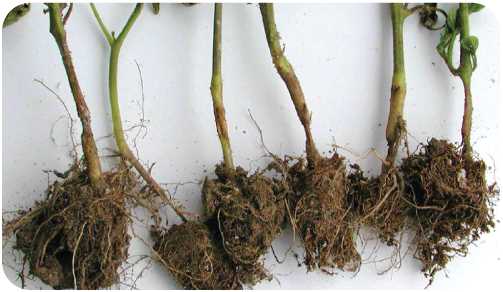

If weed infestations are widespread or manual control is not feasible, herbicides can be used as a last resort. Consult with a local agronomist or agricultural extension service to identify the most suitable herbicides for your specific weed species and application rates.
6. Regularly monitor weed control efficacy
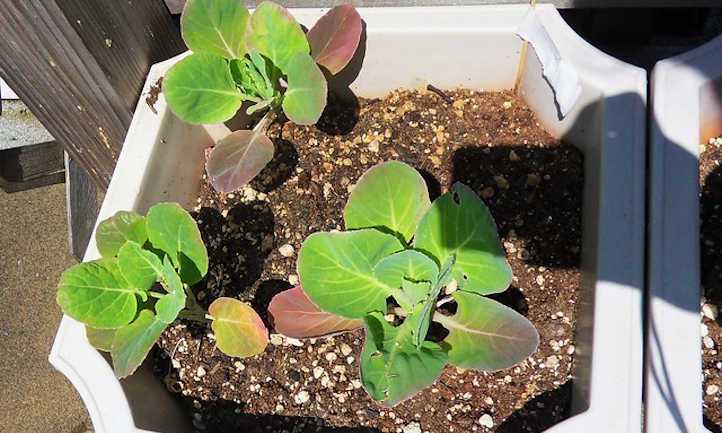

After implementing weed control measures, regularly monitor the efficacy of your efforts. Assess whether the number and size of weeds are decreasing and if the potato plants are thriving. This will help you adjust your weed control strategy if needed.
7. Practice good sanitation
Ensure that you clean and sanitize your farming equipment, tools, and machinery regularly to prevent the spread of weed seeds from one field to another. Also, remove any crop residues that may harbor weed seeds.
By monitoring and controlling weeds in your potato field, you can improve the health and productivity of your crop. Implement these tips to prevent weed competition and maximize the yield of your potato plants.
Promote Good Air Circulation
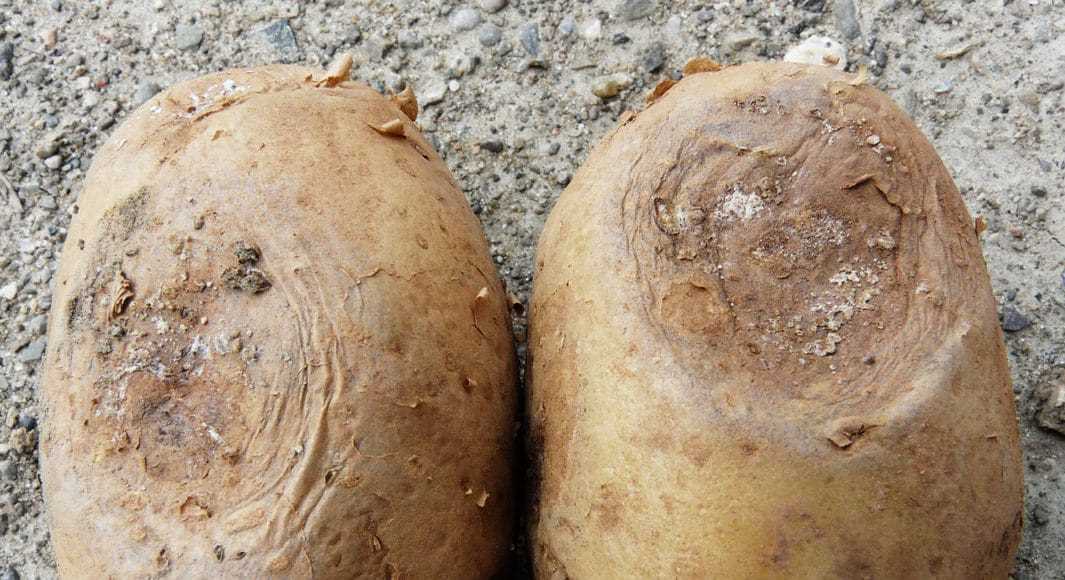

Promoting good air circulation is an effective way to prevent blackleg in your plants. By ensuring that there is adequate air movement around your sprouts, you can reduce the risk of disease development.
Here are some tips to promote good air circulation:
- Space your plants appropriately. Avoid overcrowding, as this can hinder air flow and create a favorable environment for blackleg.
- Trim or thin out any dense foliage that may be blocking air movement.
- Prune infected or diseased plants to prevent the spread of blackleg.
- Position your plants in an area with good natural airflow, such as near an open window or in a well-ventilated greenhouse.
- Use fans or other mechanical devices to enhance air circulation, especially in indoor or enclosed spaces.
By implementing these measures, you can help create an environment that is less conducive to the development and spread of blackleg in your plants.
Remove and Destroy Infected Plants
When you discover any plants that are showing signs of blackleg infection, it is important to take immediate action to prevent the disease from spreading further. Infected plants should be removed and destroyed to eliminate the source of infection.
Steps to remove and destroy infected plants:
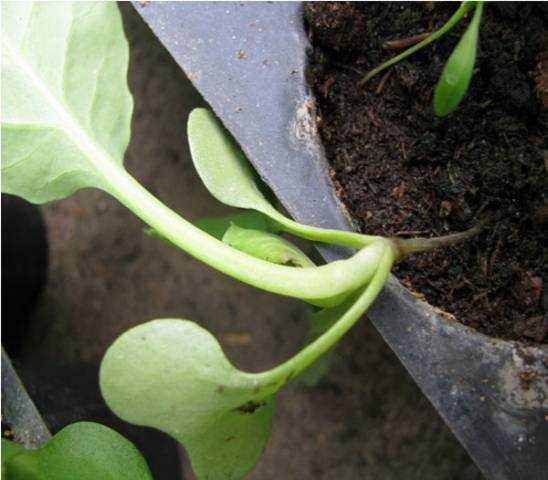

Carefully uproot the infected plants, making sure to avoid shaking off any soil or allowing the infected plant material to come into contact with healthy plants.
Place the infected plants in a sealable plastic bag or a dedicated container to prevent further spread of the disease.
Seal the bag or container securely to ensure that no pathogens can escape.
Dispose of the infected plants properly by either burning them or burying them deep underground, away from any growing areas.
It is crucial to remove and destroy infected plants as soon as possible to minimize the risk of the disease spreading to healthy plants. Always remember to clean and disinfect any tools or equipment that came into contact with the infected plants to prevent cross-contamination.
Questions and Answers:
What is blackleg and how does it affect plants?
Blackleg is a bacterial disease that affects plants, particularly brassicas like cabbage, broccoli, and cauliflower. It can cause wilting, stunted growth, and eventually death of the plant. It affects the vascular system of the plant, blocking nutrient flow and causing decay.
What are the first signs of blackleg in plants?
The first signs of blackleg in plants are usually wilting and yellowing of the leaves. The stems may also become dark and soft, and there may be a foul smell coming from the affected plants. If you notice any of these symptoms, it’s important to take action immediately to prevent the spread of the disease.
How can I prevent blackleg in my plants?
There are several steps you can take to prevent blackleg in your plants. First, make sure to choose disease-resistant varieties when planting. Rotate your crops each year to prevent the buildup of disease-causing bacteria in the soil. Practice good sanitation by removing and destroying any infected plants or plant debris. Finally, provide proper spacing and ventilation to reduce humidity and moisture, as these conditions promote the growth of blackleg bacteria.
Is there any way to treat plants already affected by blackleg?
Unfortunately, there is no cure for plants already affected by blackleg. The best course of action is to remove and destroy the infected plants to prevent further spread of the disease. Remember to dispose of them properly to avoid contaminating other plants. It’s also important to clean and sterilize any tools or equipment used in the affected area to prevent the bacteria from spreading.
Can blackleg affect plants in all stages of growth?
Yes, blackleg can affect plants in all stages of growth. It can infect seedlings, causing damping-off and seed rot. It can also affect mature plants, causing wilting, stunted growth, and eventual death. Therefore, it’s important to be vigilant and take preventive measures throughout the entire growing season to protect your plants from blackleg.







